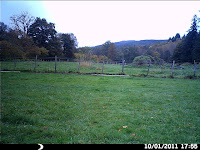"Concern is growing for Scotland's red squirrel population after a case of deadly squirrel pox was confirmed at Culzean Country Park in Ayrshire."
"The virus was found in a grey squirrel, which is unharmed by the pox, but can pass it on to red squirrels.
Until now, cases had largely been confined to the far south of Scotland.
The National Trust for Scotland (NTS) said the presence of the pox virus in Ayrshire "represents a concerning leap to the north".
Squirrel pox was detected at Culzean by NTS rangers and staff from the Red Squirrels in South Scotland Project. It was later confirmed by expert testers."
Squirrel pox was detected at Culzean by NTS rangers and staff from the Red Squirrels in South Scotland Project. It was later confirmed by expert testers."
The disease is almost always fatal to Red Squirrels. It causes lesions around the mouth, nose and eyes similar to Myxomatosis in Rabbits and usually kills the squirrel in 7 to 10 days.
Click the link below to read the rest of the story.
Click the link below to read the rest of the story.
The squirrel pox virus (squirrel parapoxvirus) is believed to be transmitted from grey to red squirrels by parasites in dreys and by contact at feeding sites.
Because of the latter, people are being advised not to provide squirrel feeders in areas where red and grey squirrels are both present.
Read a full report about this by clicking the link below.
| Lesions to the eyes, nose and mouth of a red squirrel, caused by the squirrel pox virus |
















































